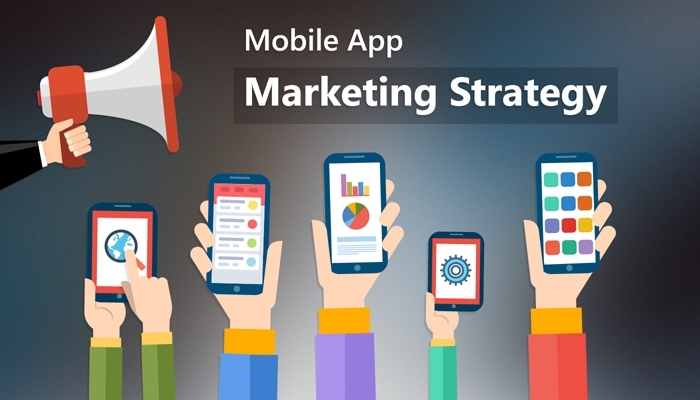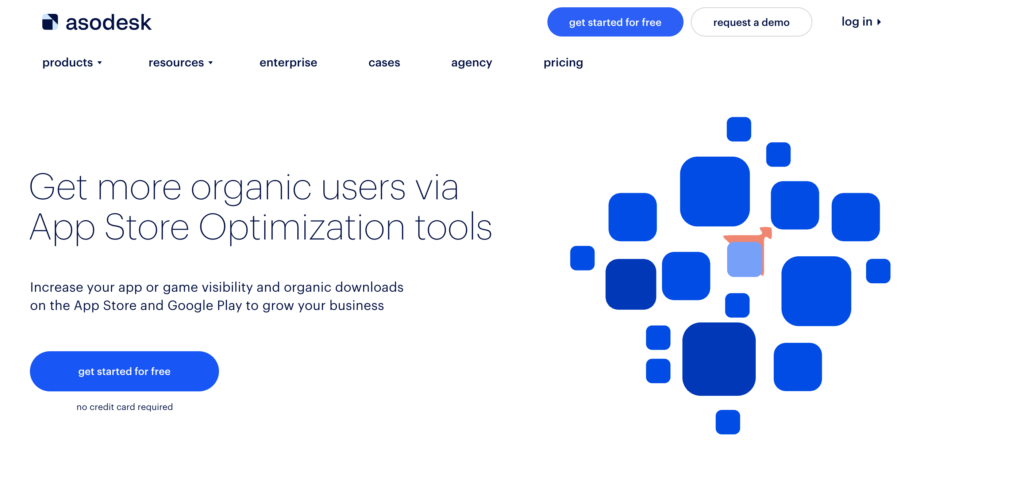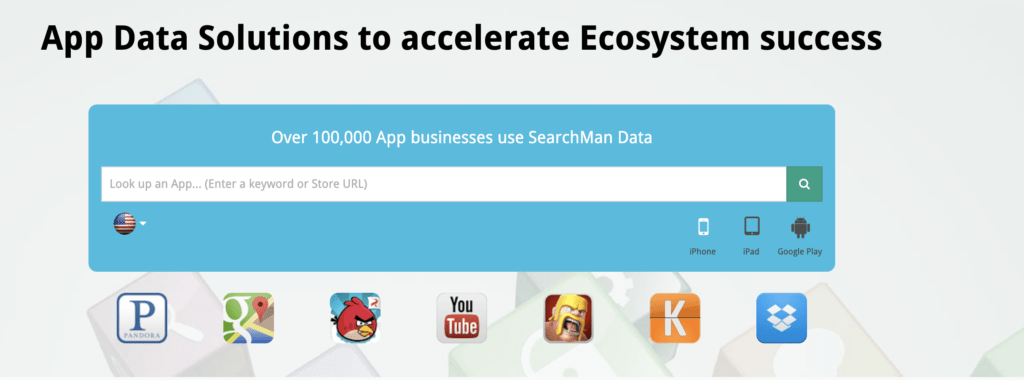Free resources for app creators
Create a Budget-Friendly Mobile Marketing Plan that Gets Results
When it comes to mobile app development, there are numerous expenses to consider, and many of these expenses aren’t even related to app development. Nobody will know your app exists if you don’t allocate dollars to your marketing approach.
This article will teach you everything you need to know about mobile app marketing costs. We’ve got you covered whether you’re an app developer, white label reseller, launching an app as a business extension, or designing a brand new app from scratch.

How much does marketing an app cost?
This is the question most asked of our sales team, and the most difficult to answer. There are so many variables when it comes to app marketing that a one-size-fits all answer isn’t possible. The cost of marketing your app will largely depend on your budget, but also on factors like the type of app you have, who your target audience is, and what kind of marketing strategies you use.
With that said, we can give you a general idea of how much it costs to market an app. For a typical small to medium-sized business, expect to spend anywhere from $1000 to $10,000 per month on app marketing. Of course that’s just a rough estimate; your actual monthly spend may be more or less depending on the factors mentioned above.
One thing is certain though: more money doesn’t necessarily equal better results. You can actually get away with a low-cost mobile app marketing strategy, provided your techniques are effective.
At the end of the day, you need to concentrate on your cost per install (CPI). This important app marketing metric allows you to calculate how much each installation costs you. Here’s how it works:
CPI = Total ad spend/Total measured app installs
Tracking this KPI forces you to be smart with your marketing budget and allows you to determine whether specific campaigns are effective.
Why is it important to have a marketing budget?
You need to have a marketing budget for your app for many reasons. First and foremost, without a budget you have no way of calculating your CPI (as discussed above). Secondly, a marketing budget allows you to track your spending and ROI over time. By monitoring these metrics, you can make changes to your marketing strategy as needed and ensure that you’re getting the most bang for your buck.
It’s also important to have a marketing budget because it shows that you’re serious about promoting your app. Potential investors are more likely to take you seriously if they see that you’ve allocated funds towards marketing. Having a solid marketing budget also makes it more likely that you’ll be included in any lists or roundups of new apps, such as the App Store’s “New and Noteworthy” section.
Including your marketing budget in your overall app development budget is crucial. You shouldn’t treat marketing as an afterthought or an expense to be cut when things get tight. Marketing should be built into your budget from the very beginning.
Ways to market your mobile app
Now that we’ve discussed the importance of having a marketing budget, it’s time to learn how to create one. The first step is understanding what expenses you need to account for. Here are some common mobile app marketing costs:
App store optimization (ASO): ASO is the process of optimizing your app store listing to improve your app’s visibility and ranking. This can be done through keyword research, title optimization, and creating engaging app store screenshots and videos. ASO is a long-term marketing strategy, so it’s important to factor it into your budget from the beginning.
Read our blog about ASO
Paid user acquisition: Paid user acquisition is a form of advertising that lets you pay to have your app installed on users’ devices. This can be done through various channels, such as social media, search engines, or even directly through app stores. Paid user acquisition is one of the quickest ways to get your app in front of potential users, but it can also be one of the most expensive.
Public relations: Public relations (PR) is a great way to generate buzz for your app. But it can also be costly, especially if you hire a PR firm to handle your media relations. You can also do PR yourself, but it can be time-consuming and may not be as effective as working with a professional.
Content marketing: Content marketing is a great way to drive organic traffic to your app’s landing page. This involves creating blog posts, infographics, videos, or other types of content that will interest potential users and encourage them to check out your app. While content marketing takes time and effort, it is relatively inexpensive compared to other marketing strategies.
Discover 10 ways to grow your app with content marketing
Viral marketing: The concept of “going viral” can be a cost-effective way to draw attention to your app, but it can be very hard to predict and control. If you want to try viral marketing, make sure you have a solid plan in place and allocate a good portion of your budget to it.
Social media marketing: Social media is a powerful tool for mobile app marketing and allows you to target specific audiences. However, it can be time-consuming and requires a really solid social media strategy. If you choose to use paid social media advertising, it can also become costly.
Email marketing: Email marketing can be a great way to reach potential users who may not be active on social media. It can also be relatively inexpensive, especially if you have a large email list.
In-app advertising: In-app advertising allows you to place ads for your product in other apps and games. This can be a great way to reach potential users who are already using apps that target your key audience. In-app advertising is usually less expensive than other forms of paid user acquisition, but it can still add up.
As you can see, there are many different types of costs involved in mobile app marketing, and this is just a small sampling. When creating your budget, make sure to account for all potential expenses.
Creating a marketing budget for your mobile app
Now that you know what expenses to account for, you can start creating your mobile app marketing budget. Begin by estimating how much you want to spend on each of the above strategies. Then, consider your overall app development budget and make sure that your marketing budget is a reasonable percentage of that.
Our recommendation is to plan on spending 50% of development expenses on your initial launch marketing. So, if you spend $100k on development, plan for $50k in the first 12 months on marketing. This could make a huge difference in your probability of success. Too many entrepreneurs spend tens of thousands of dollars on their app but don’t budget anything for marketing, which becomes a huge barrier to getting further faster.
Once you have a rough idea of how much you want to spend, it’s time to start allocating funds to specific campaigns and activities. Begin by creating a list of all the tasks that need to be completed to execute each marketing strategy. For example, if you’re planning to do ASO, your list might include keyword research, title optimization, and creating app store assets. Make sure to include both one-time costs (such as design fees) and ongoing costs (such as monthly subscription fees).
Next, start assigning budget items to each task. Once again remember to include both fixed costs (such as design fees) and variable costs (such as pay-per-click advertising). This will give you a clear picture of how much each marketing activity will cost and help you stay within your budget.
Tying it all together
Now that you know how to create a mobile app marketing budget, it’s time to put your plan into action. Begin by allocating funds to the most important marketing activities and campaigns. Then, track your progress and adjust your budget accordingly. And finally, don’t forget to reevaluate your budget on a regular basis to make sure that your marketing efforts are still aligned with your overall business goals.
If you need help creating a mobile app marketing budget or executing your marketing plan, contact us today. Our team of experts can help you create a customized marketing strategy that fits your needs and budget.
The 10 Secrets of App Store Optimisation Success
Do you want to increase the number of users and traffic to your app? You’re not alone.
App store optimisation has become an essential part of any solid app marketing strategy, but to succeed you need to get it right.
In this article, we’ll cover all you need to know about optimising your app store listing so you can start generating more traffic, downloads, and sign-ups!
Let’s get started…
App Store Search

We can’t talk about app store optimisation without mentioning the powerful tool that is ‘app store search’.
As soon as people began searching for ‘hair salons around me’ or ‘pet store near me’, SEO for Google search became every marketer’s focus, with businesses wanting to appear first on the list of results.
Similarly, in both the Google Play Store and the App Store the competition to rank high for each keyword is fierce. And with over 5 million apps to compete with, good app store optimisation is all about raising the bar.
What is App Store Optimisation (ASO)?
App store optimisation, or ASO, is the process of optimising an app’s visibility and ranking in an app store, such as the Apple App Store or Google Play Store.
It involves various techniques, including optimising the app’s title, description, keywords, and images to help it rank higher in search results and increase its overall discoverability. By effectively optimising your app for these stores, you help drive more traffic and downloads, resulting in increased visibility and revenue.
App store optimisation also focuses largely on clickthrough rate (CTR). For people to click on your app, it needs to look convincing enough and appealing.
Benefits of ASO
- Increased visibility and discoverability of your app
- More traffic and downloads
- Improved CTR
- Increased conversion rate
How does ASO work?
ASO works by making all the listed information about an app as applicable and attractive as possible to its intended audience to help it rank higher in searches. There are a number of factors that impact an app’s ranking including its keyword relevancy, competitive density, ratings and reviews, and more. By optimising these different factors, you can help to improve your app’s rankings and overall visibility on the app stores.
Your Ultimate ASO Checklist
These ten steps to ASO success will walk you through how to create the best ASO strategy. It’s a good idea to check you’ve covered all these areas before launching your app!
Use Targeted Keywords in the App Name or Title
Your app name or title is the first thing people will see when they search for your app in the app store. As a result, it’s important to include relevant keywords that accurately describe your app in the title. This will help improve your app’s visibility and ranking in search results.
Make your App Description Relevant and Clear
The app description is another important factor in ASO. Make sure you include relevant keywords and phrases that accurately describe your app and what it does. In addition, you’ll want to make sure that your description is clear, concise, and easy to read.
Create Compelling App Icons and Screenshots
Your app icon and screenshots are two of the most important factors in driving user engagement and conversion. To improve your app’s visibility in the search results, try to use high-quality images that accurately depict your app and its features.
Encourage App Ratings and Reviews
App ratings and reviews are another important factor that drive engagement and conversions. By encouraging your users to leave positive ratings and reviews, you can help to improve your overall discoverability on the app stores.
Do your Keyword Research
Just as with any other SEO campaign, keyword research is essential to ASO success. Try to use relevant keywords and phrases that accurately describe your app and what it does. In addition, you’ll want to make sure that your keywords are included in your app title, description, and keywords list.
Consider Localisation
Localisation, or tailoring the language and features of your app to the region in which it will be used, is another important factor to consider when optimising your app for the app store. By localising your app, you can help to improve its visibility and ranking in different countries and regions.
Don’t Underestimate the Subtitle
Subtitles can also be an important part of ASO, as they can help to improve your app’s discoverability and engagement. Try to use clear and compelling subtitles that accurately describe the purpose and features of your app. Additionally, you may want to consider adding subtitles in different languages if you’re targeting users in multiple countries or regions. The subtitle has a 30-character limit, so explain what your app is about simply and with no fluff!
Boost your Download Numbers
The number of downloads impacts your app’s visibility and ranking in the app store. In general, the more downloads an app has, the higher it will rank in the search results. As a result, you may want to consider investing in paid marketing or other strategies to help increase your app’s download numbers.
Keep your App Updated
It’s absolutely crucial you keep your app up to date with the latest features, bug fixes, and changes. By regularly updating your app, you not only keep your users happy, but you also help to improve its optimisation.
Continually Analyse and Optimise Performance
Finally, it’s important to regularly monitor the performance of your app over time. This includes tracking metrics such as download rates, traffic sources, conversion rates, etc. to identify areas for improvement. With this data, you can make changes or tweaks to your app’s ASO strategy to improve its overall visibility and ranking.
Metrics to track app performance:
- Downloads
- Traffic sources
- Conversion rates
- Average rating
- Number of reviews
- Social media engagement
- Bounce rate
- Time on app/site
- Number of pageviews
- Unique visitors
What are the Most Popular ASO Tools?
There are many free and paid app store optimisation tools on the market. We’ve compiled a list of some of the best ones to help you win at ASO.
App Tweak

Many developers list AppTweak as one of the top ASO tools. It employs data science and provides ad intelligence, market intelligence, and other services.
ASOdesk

ASOdesk is an app marketing and app store optimisation solution with user-friendliness that reduces developer tasks and provides comprehensive analytics and reports. It also offers extensive reports on competitor strategies that might be applied to your own.
SearchMan

SearchMan is a fantastic tool for enhancing your app’s visibility on both the Apple App Store and Google Play. It provides keyword strategy and keyword programmes. It not only tracks but also compares your app’s performance to that of your competitors.
AppRadar

AppRadar gives its consumers the best keyword suggestions to help them get the most out of their apps. This covers keywords from both the United States and other countries. AppRadar also provides tools to assist with app development.
SplitMetrics

In today’s world, A/B testing is critical for apps. A/B tests for Android and iOS smartphones may be used to test ideas, features, and concepts with SplitMetrics.
Adjust

Adjust is software created primarily to address privacy and performance concerns. This comprises all aspects of cyber security, fraud protection, and automation solutions.
The Tool

With its numerous functions, The Tool optimises your approach, assists in increasing downloads, and grows your business.
Gummicube

Gummicube is a popular data analytics app and it’s mostly used for ASO, mobile marketing, and marketing analysis.
There are many other great ASO tools out there, but these are just a few of the most popular ones. No matter which tool you choose, make sure that it’s something that you’re comfortable with and that it offers the features and functions that you need.
To sum up, optimizing your app for visibility and ranking in app stores is an ongoing process that requires careful attention and continuous monitoring. By following the tips above, you can effectively enhance your app’s performance and take your app marketing to the next level.